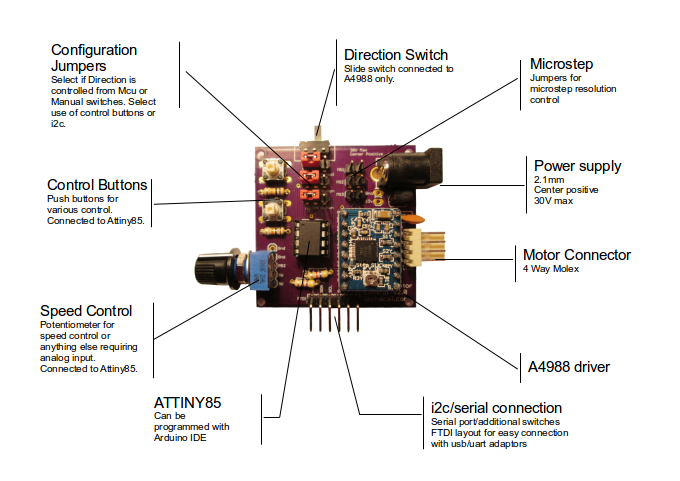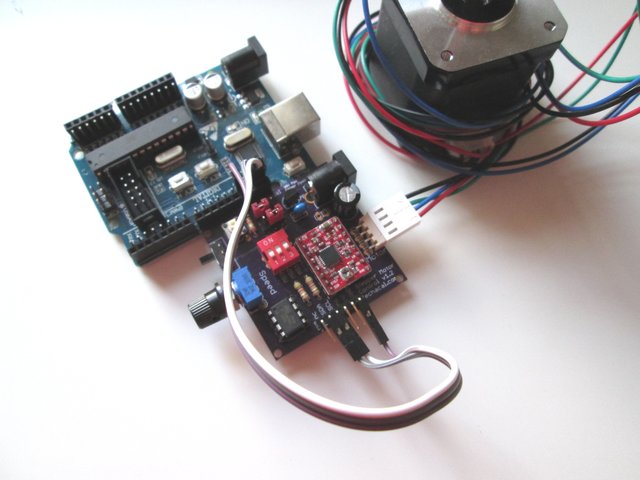Stepper control v2
Arduino Stepper Control Board
For version 1.2 and below see this documentation
The tiny stepper controller is a controller board for stepper motor. It can be controlled manually (potentiometer and switches) and programmed with Arduiono IDE.
Technical Specifications
Stepper Motor driver board: A4988
Microcontroller: Attiny85.
Input Power: 30Volts Maximum.
Power Socket: 2.1mm Jack. Center positive.
Motor connector: 4 way molex.
Manual Control ready with:
- Potentiometer for speed.
- Push button for single step increment.
- Slider switch for direction selection.
Hardware Controls
Direction
The direction of motor spin can be controlled manually using the slide switch. For this the top jumper must be set accordingly. This connects the slide switch directly to the direction input of the A4988.
The second setup of the jumper will allow to control the direction from the Attiny85 mcu. The slide switch has no effect in the is configuration.
Direction and Step can both be controlled manually or from Attiny85 mcu using jumpers on the board.
Step resolution can be configured using DIL switches.
Two digital I/O available for external use (I2C / Serial /external sensors/ external switch).
Comes flashed with the basic default sketch to run the motor at various speeds.
A short demonstration can be seen on this video
Default Sketch
The default sketch loaded in the Attiny85 is a basic sketch to control the motor manually. The potentiometer will be use as speed control.
Direction will change every turn. However this can be overwritten by changing the jumper on the board.
i2c Control
The two i2c pins of the Attiny85 are available on the board to be controlled from an i2c master.
This is a sketch for the Attiny85 for speed and direction control. Commands are as follow
"a" for direction 1 - e.g. Master will issue Wire.write("a")
"b" for direction 2 - e.g. Master will issue Wire.write("b")
"delay:" for speed control - e.g. Master will issue Wire.write("1500:")
":" for stopping the motor
Delay must be a number followed by a ":" which is the stop character.
Download Slave i2c Sketch.
Download Master i2c Sketch.

